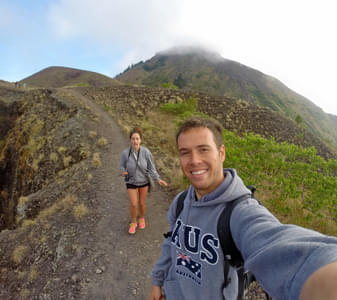About Drukgyel Dzong
The remnants of once flourishing Drukgeyl Dzong echo many stories. The Dzong sits on a path that connects Paro Valley to Tibet through the Tremo La pass. In the past, it was a significant trade route and the Dzong was a major administrative centre. In 1951, the Dzong was destroyed by a fire and the charred walls and beams are still visible. The complex consists of a Chorten, chapel and ruins of big towers. An adventurous climb leads you to the ruins where you can admire the once proud and regal building.
Despite its dilapidated state, Drukgyel Dzong still attracts visitors, offering glimpses into Bhutan's history and majestic mountain vistas. Including it in Bhutan packages add depth to travellers' cultural and historical experiences. The complex consists of a Chorten, chapel and ruins of big towers. An adventurous climb leads you to the ruins where you can admire the once proud and regal building.
Drukgyel Dzong Highlights
• Marvel at Drukgyel Dzong, a historic fortress symbolising Bhutan's military prowess.
• Enjoy the expansive view of towering Mount Jomolhari on exceptionally clear days from the fortress.
• Stroll through the ancient ruins where Bhutanese warriors fiercely defended their homeland.
• Admire the strategic architecture, ingeniously designed for optimal defence and resilience.
• Explore the remains of the 17th-century armoury, once considered the best in the entire region.
How To Reach Drukgyel Dzong
1. By Road: Reaching Drukgyel Dzong by road can be an adventure, as it involves navigating mountainous terrain and enjoying stunning views along the way. The Dzong is located 14.9 kilometres away from Paro.
2. By Bus: From the Paro town centre, local buses are available that travel towards Drukgyel Dzong. The bus journey can take about 25 to 40 minutes via the Paro-Thimphu Highway, depending on the traffic and road conditions. The buses usually run at regular intervals throughout the day.
3. By Car: If you prefer a more comfortable journey, hiring a car from Paro is a great option. The drive takes about 30 to 40 minutes via the Paro-Thimphu Highway and allows you to stop at viewpoints along the way.
4. By Bike: For the more adventurous, biking to Drukgyel Dzong from Paro can be exhilarating and rewarding. The ride takes about an hour, and you will be able to appreciate the tranquil countryside at your own pace.
5. By Foot: For those who enjoy hiking, it’s possible to walk to Drukgyel Dzong from Paro. The hike can take up to 5 to 6 hours and is quite steep in some sections. However, it offers spectacular views of the Paro Valley and the surrounding mountains.
Best Time To Visit Drukgyel Dzong
Drukgyel Dzong is enchanting throughout the year. It offers unique perspectives and experiences each season.
1. Best Season: Winter, from October to March, is ideal for visiting Drukgyel Dzong. The air is crisp, and the sky is clear, perfect for enjoying the panoramic views of snow-capped Mount Jomolhari from the ruins.
2. Best Day of the Week: Weekdays are less crowded and are ideal for exploring the Dzong. This is when you will have more peace to explore the site and take in its historical essence without the bustle of weekend tourists.
3. Best Time of the Day: Opt to visit the Dzong in the mornings for a memorable experience. Arriving early, around 08:00 a.m. to 10:00 a.m., lets you witness the sunrise illuminating the fortress, enhancing the beauty and tranquillity of the site.
Drukgyel Dzong Other Essential Information
1. Wear comfortable shoes, as the terrain around the Dzong is quite uneven.
2. Dress modestly to respect the local culture, and cover your shoulders and knees.
3. Bring a water bottle as there are few places to buy drinks nearby.
4. Use sunscreen and a hat since the area is often sunny and exposed.
5. While photography is allowed, you must be respectful and avoid using flash indoors.
6. Arrive early to enjoy the site in quieter, more serene conditions.
7. Keep your belongings secure by carrying a small, manageable backpack.
Tourism Board Alliances
Drukgyel Dzong Reviews

